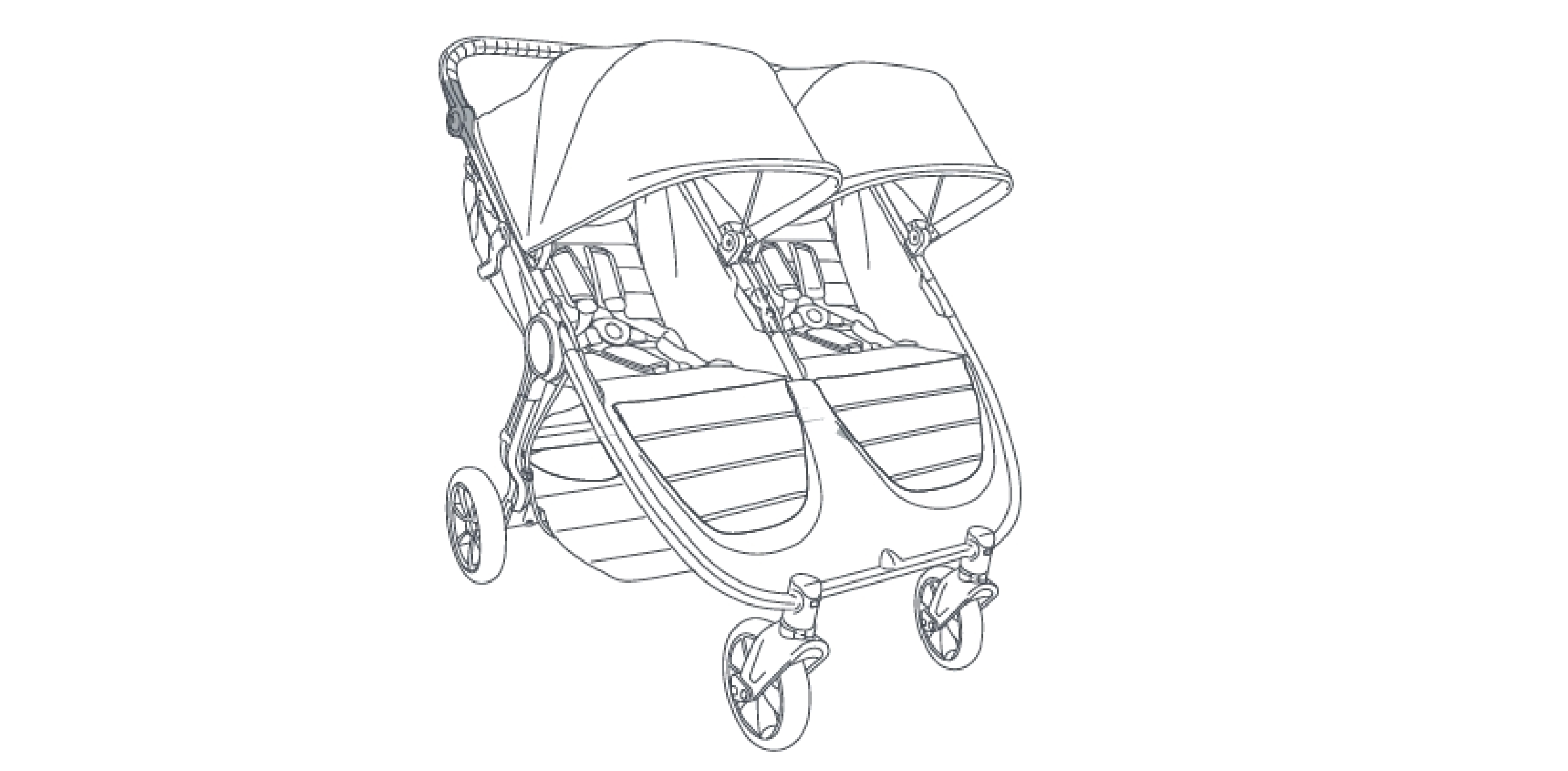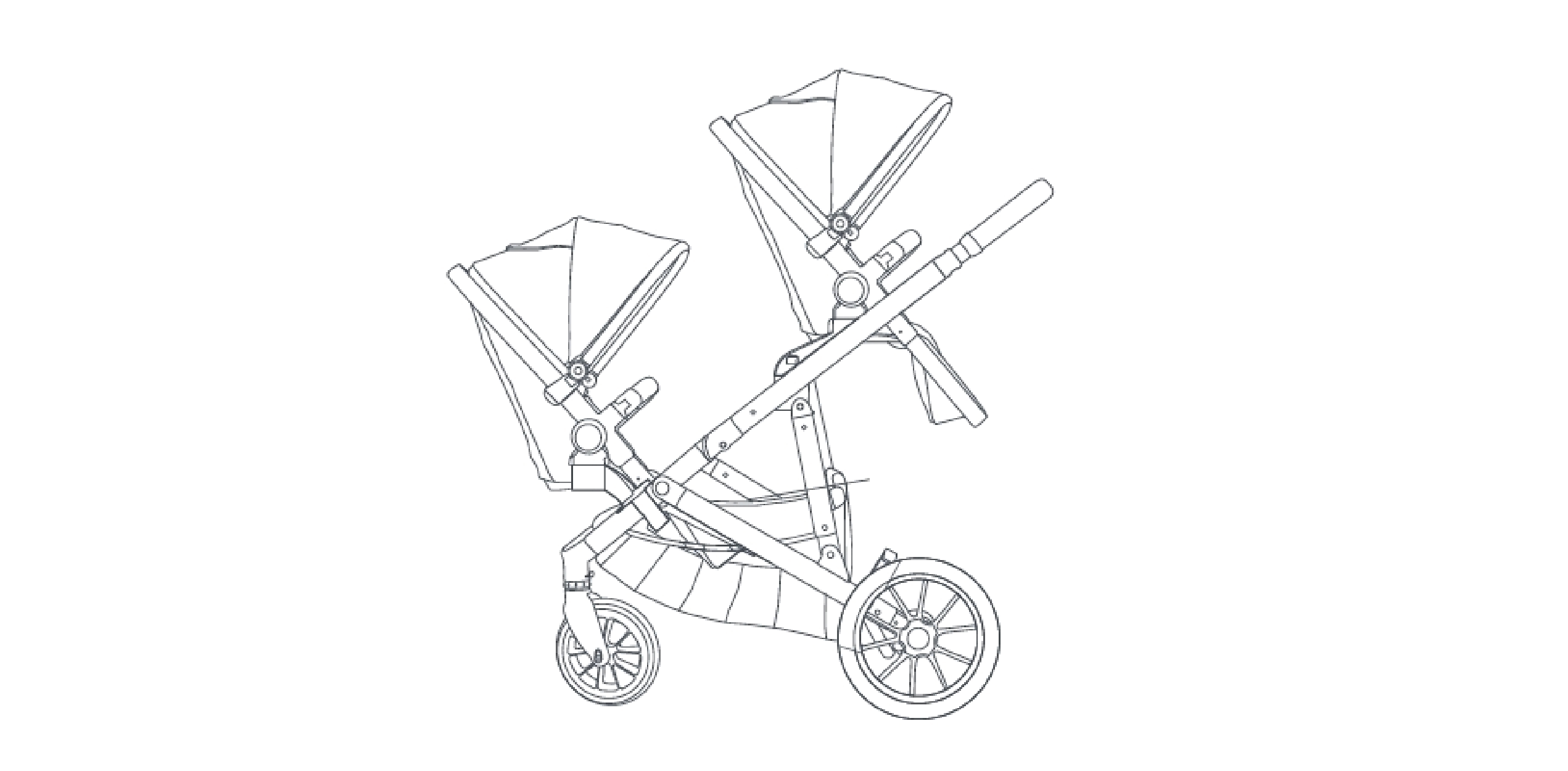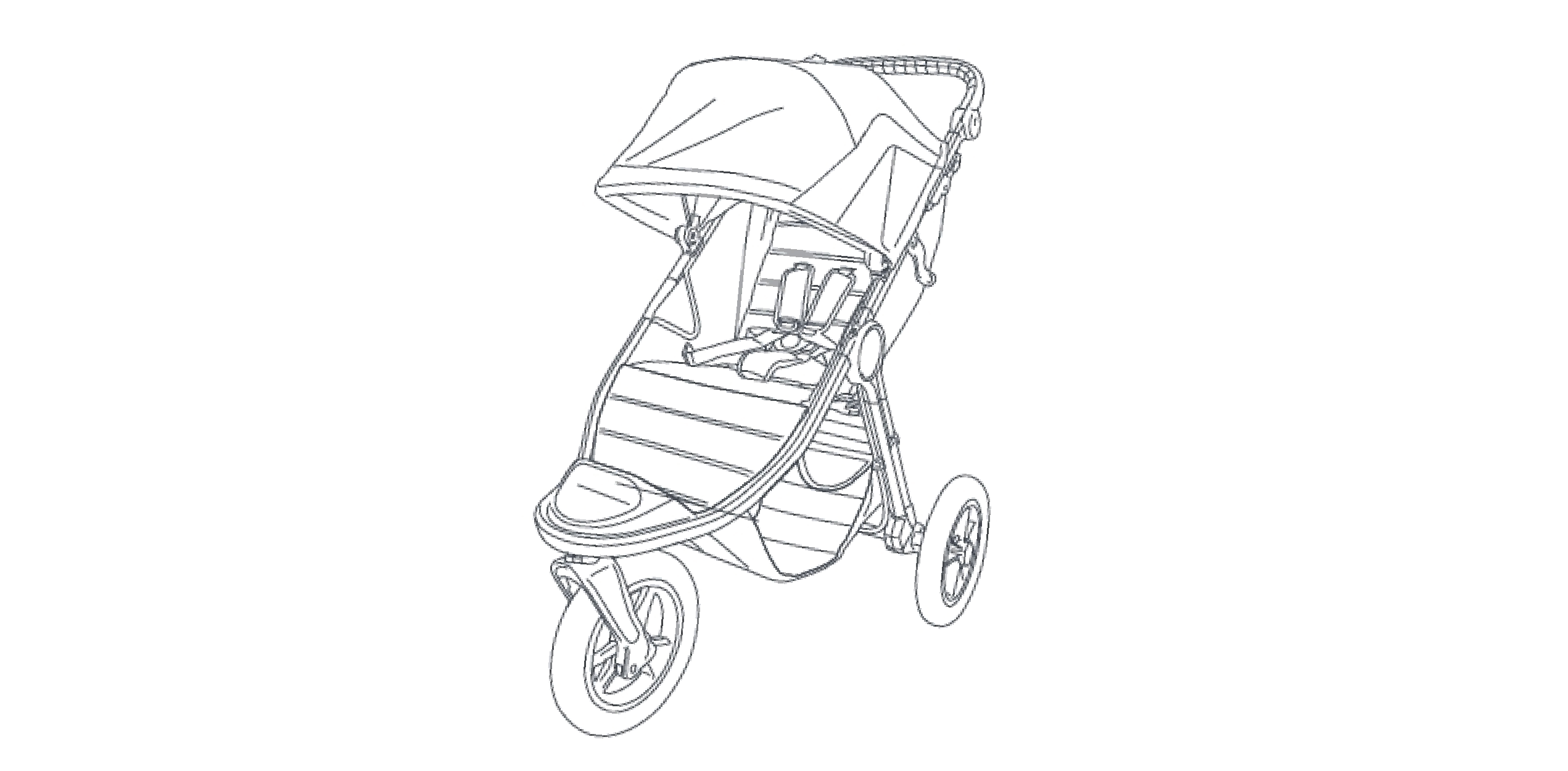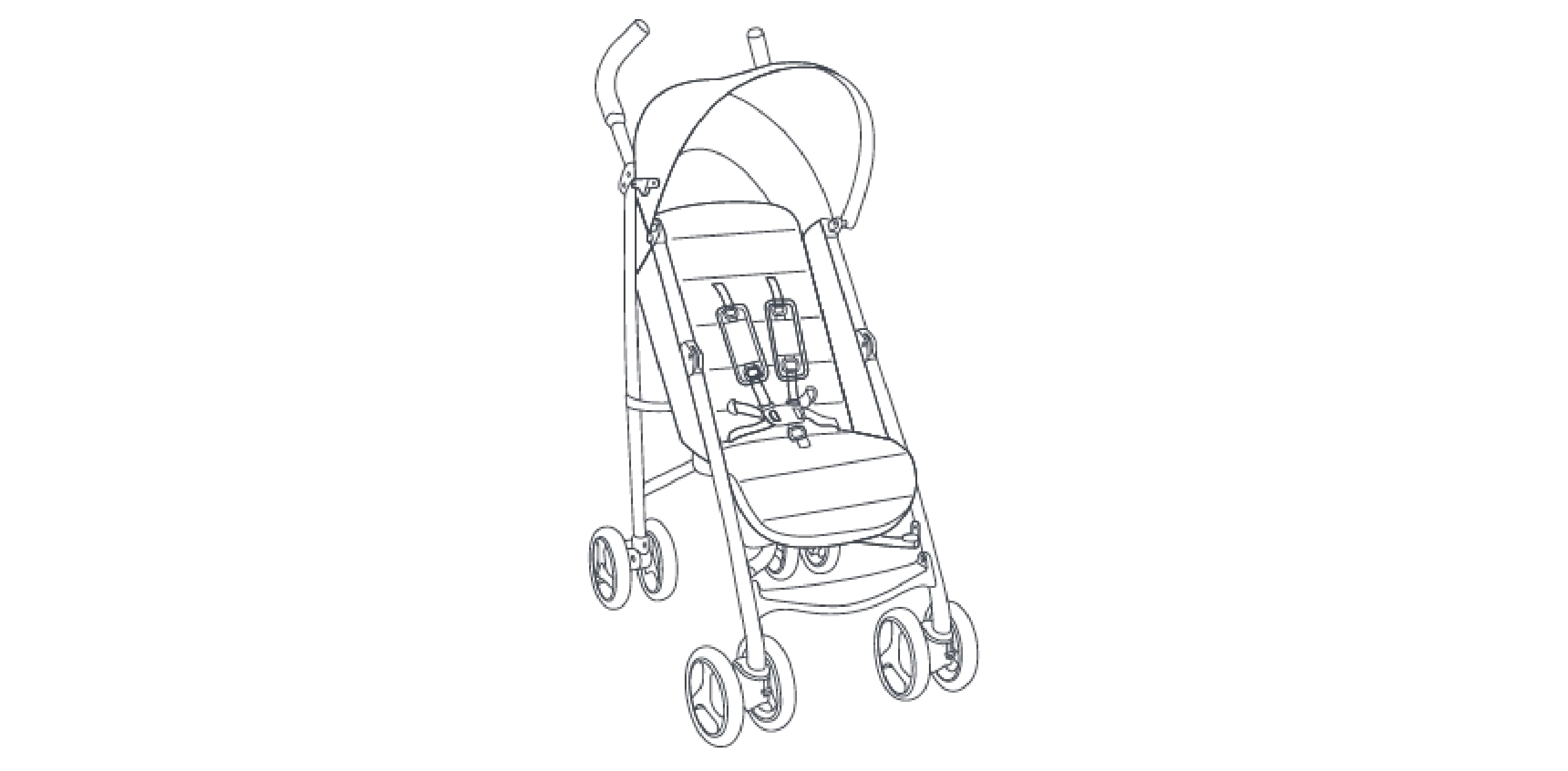When you’re writing your list of things to get before baby arrives, there’s a good chance a pram is near the top. If you find yourself in your local baby store staring blankly at a sea of strollers, you’re not alone. That’s why we have created this pram buying guide: to help you narrow down your choices and know exactly what features to look for in your perfect pram.
By the time you get to the end of this guide, you’ll know:
- What the different types of prams and strollers are.
- Important information about safety and prams.
- All the essential questions to consider as you sort through the brands and types to help you narrow down your options.
Let’s get started!
Why do you need a pram or stroller?
Every family is different, and there may be some parents out there who don’t actually need a pram or stroller. But many parents find a pram is useful for everyday life with your little one. Whether you’re getting out for an afternoon walk, running errands or visiting with other parents at your local café, a pram can be a helpful addition to the rhythms and routines of life. There are other ways to transport your little one, such as a carrier, sling, or just in your arms, but prams and strollers offer some specific benefits, such as:
- Motion and movement: It’s no secret babies love some movement to soothe. Babywearing is a fantastic option, but if you need a break, or you’re feeling touched out, a pram can save the day.
- Storage: Most prams have a basket under the seat, or have the option of attaching a parent organiser (also called a pram caddy), letting you carry not only your baby, but also a bag of groceries, your phone and keys, hand sanitiser, or your nappy bag.
- Baby (or parent) preference: Some babies are little koalas and would live in a carrier if they could. Others prefer to have their own space. Prams and strollers are a handy way to keep those babies close and safe as your go about your day.
Why is it important to choose the right kind of pram?
Getting a pram that doesn’t suit you can be inconvenient (and costly if you decide to purchase a new one with the features you want later on).
Prams are a functional baby product, so you should think about how you plan on using it. Otherwise, you may end up with a pram that is too large to fit in your car, or a stroller that you wish you could take out for a jog, but which doesn’t have appropriate features like suspension designed to keep your little one safe and comfy. Another key consideration is where you live – someone living rurally with fewer footpaths will likely have different needs for their pram than someone living on the top floor of an apartment building.
What's the difference between a pram and a stroller?
Choosing between a pram and a stroller is usually based on the age of your little one. Babies under six months old, generally need recline options that allow them to lay flat, for both comfort and safety. This typically means a pram with a reclining seat or bassinet attachment, although there are some strollers which offer good recline options for younger babies.
Strollers without adequate recline are better suited to babies older than six months who can hold themselves upright. They are all about convenience – they're often used for travel and quick trips where larger prams or strollers are too large or complex to transport.
Types of prams and strollers
There are many different types of prams and strollers. In Baby Bunting stores, these different types are arranged by brand and price point to make browsing easier; online, they are sorted by categories.
Single Prams
Single prams may have 3 or 4 wheels and only have space for one seat. They are perfect for families only planning to have one child, or who intend to space their family out with a few years between each child, or who are open to using travel accessories for one child (for example, toddlers could ride on a skateboard attachment while the baby rides in the pram).
They tend to have an under-seat storage basket, and do not have the option to add a second seat anywhere. Some models come with options to attach a baby capsule, allowing easy transfers from a vehicle to the pram. These prams may be able to fold flat as one piece but may also need to be taken apart (into seat and frame components) to be stored or put in the car.
Three wheels or four wheels for a pram really comes down to personal preference and where you want to use your pram. For many people, wheels aren’t the deciding factor for choosing their pram – it's all about the other features that go along with it. There are potential benefits and considerations of each type of pram, which we've summarised below. This list isn’t exhaustive and may not apply to every single model of each type – it’s just to get you started and give an idea of what to think about before narrowing down your options.
3-wheel prams
Benefits
- Tend to be more manoeuvrable
- May be a smoother ride over varying terrain
Considerations
- Generally won’t have double or tandem options
- May be forward-facing only
4-wheel prams
Benefits
- May have options for conversion to tandem
- May offer peace of mind for stability
- May have more seat configuration options
Considerations
- Some people find them a bit less manoeuvrable
- May be less suited to bumpy terrain

Double prams have two seats in a side-by-side position
Double Prams
They are great for parents with twins or small children close in age. They will also generally have a storage basket. Double strollers tend to be quite wide so they can fit the two seats next to each other, which can make it tricky to navigate stores, cafés or paths with narrow clearance.
Many parents enjoy the one-piece fold that double prams allow, as opposed to having a frame and two seats to assemble and put down every time you arrive or leave a place. Each seat reclines independently, so you can have one child laying back while the other is sitting up.

Tandem Prams
Tandem prams are versatile, able to function as a single or double prams when a separate second seat is connected to the frame. They are perfect for parents with children close in age or multiples, offering various seat configurations, such as two bassinets for newborns. The seats are stacked at different heights, maintaining the same width as a single pram but with one seat slightly higher than the other. Parents can choose seat orientations, including facing each other, both forward, or both backward, though available configurations vary by pram model.
These prams always have 4 wheels for stability and are more maneuverable than double prams, making them better suited for tight spaces.

Running Pram
These prams tend to be recommended for babies aged from at least 6 months and up depending on your baby’s head, neck and trunk control, due to the bumping and jiggling that will naturally occur while running. Little ones need head control and core strength to be comfortable and safe while joining your running routine, so it’s a good idea to consult a health professional before taking your little partner along for the first time.
Some running (or jogging) prams may be able to be used as a standard pram from birth, but this may require additional approved accessories to be safe and comfortable for your baby.

Allow for easy storage, mobility, and convenience
Compact Stroller
Compact (umbrella) strollers are extremely lightweight, stay in one piece, and collapse down to compact sizes when folded. They are ideal for quick trips out and about for older babies and toddlers and are great options for travelling when you need them to be versatile enough to hold or stow on the go. They may have basic sunshades, and they are typically cheaper than many prams, because they don’t have all the bells and whistles (though they still must meet the relevant safety standards in Australia).
Key info about pram safety
Safety is always a priority, and as retailers for baby products we take safety seriously. The good news is that in Australia, there are stringent product standards for pram manufacturers and retailers to follow. It’s a great idea to know a bit about the safety features you can expect to find in a pram so you can use them properly and so you can identify if any component is missing or not functioning correctly.
Requirements for Australian prams and strollers
In Australia, pram manufacturers must adhere to strict safety standards. Labels will clearly denote this compliance on the pram, the safety instructions, and on any packaging.
As a minimum, prams and strollers must have:
- Restraint harnesses for the baby.
- Instructions must be available that not only specify safety warnings but also detail proper care of the pram and how to use it correctly.
- Prams must pass performance testing through specialist laboratories for impact, strength, load, durability, and stability.
- Tethers to loop around an adult's wrist.
- Working brakes/parking device (coloured red) to stop the pram rolling. This must be out of the child's reach.
All this information and more can be found on the Australian Government’s Product Safety Guidelines website. Importantly, safety features can only do their job when used correctly – even the best harness cannot prevent a fall if it’s not positioned securely around your little one’s body, and an adult tether strap can’t do anything if it’s not around a caregiver’s wrist.
How to choose a pram
OK, so now you know about the different types of prams on the market and maybe you’re starting to get an idea of what you might be looking for. Next up: our top 8 considerations when making that final choice.
These include:
- Budget
- Lifestyle
- Age of child/ren
- Your vehicle
- Fold mechanism
- Travel system compatibility
- Manoeuvrability and adjustability
- Storage and accessories.
Consideration 1: Budget
Prams and strollers can range from as little as $27 at some retailers for the most basic umbrella stroller right into the thousands of dollars for top-of-the-range features. Having a ballpark idea for how much you’re willing to spend can be helpful to narrow down the brands or models you look at.
Questions to ask yourself when deciding on your budget:
- How much will I be using my pram? If you’re anticipating it being a daily essential, then you might want to spend a little more than someone who is just wanting an extra option for a stroll at the local shopping centre.
- How important are materials and aesthetics to myself and my family? Some families place higher value on appearance, fabrics, and other materials. There’s no right or wrong here – simply something to consider.
- Can I go without some features? Are you someone who is happy to compromise some of the bells and whistles in the name of saving money for other things?
- Do I intend to use my pram for many years for multiple children? While there are very durable brands available for great prices, if you want something that will last the distance and perhaps save money long-term, you might consider investing more upfront to get a pram that you know will last through the wear and tear children naturally bring to the party.
Consideration 2: Lifestyle
Do you consider your local café part of your natural habitat? Or are you more of an outdoor explorer by nature? Maybe spending sprees at Westfields are more your style? Your lifestyle will be an important factor to think about when you’re choosing your pram.
Questions to ask yourself about your lifestyle:
- Will I mainly be using my pram in urban/suburban settings (e.g. shopping centres, cafés, maintained footpaths)?
- Will I need to venture ‘off-road’ regularly onto dirt, grass, sand or gravel?
- Do I intend on taking my pram running once my baby is older?
Regardless of your answers to the above, the final consideration here is this: are your destinations within walking distance from your home, or will you need to travel by vehicle to then access your chosen activity? If your daily life requires travelling by car a lot, then you’ll want a pram that folds down and sets up quickly and easily, is lightweight enough to hoist into your car and is small enough to fit comfortably along with any of your other personal belongings for the day.
Consideration 3: Age of child/ren who will use it
Some families are preparing for a new baby whereas others may be looking to get a new pram to suit their growing toddler's needs. Prams and strollers typically have weight limits, so this is something to think about when you’re looking at your options.
Questions to ask yourself about the age of your little one:
- Will a newborn be using this pram? If so, then you may prefer a pram or stroller with a lay-flat option or a bassinet attachment for safety and comfort.
- Do I intend on using this pram through toddlerhood until we no longer use a pram? Look for a pram with good height through the seat to allow torso growth, as well as one with a higher weight limit.
- Is this pram specifically for a little one already in the toddler stage? You might find a lightweight frame is important so you can push one-handed while your independent walker strolls with you, or that you can carry under one arm while you support their exploration of the world.
Consideration 4: Your vehicle
Not everyone has a personal vehicle, but if you do, it’s a very important consideration when choosing your pram. There’s nothing worse than getting your shiny new pram or stroller, folding it up, and then realising it’s simply not going to fit in the car. Luckily, most prams will fit in most vehicles – even the small cars! – so the real question is then how much space is left for the rest of your stuff.
Whether you’re a seasoned parent or just entering this world, you probably already know that babies come with lots of bags. From nappy bags to more grocery bags (and don’t even talk about the bags needed for an overnight away with baby), space in your car is now prime real estate, so a compact pram will have you thanking your stars that you chose sensibly.
Questions to ask yourself (or a retail team member) about prams and vehicles:
- Does the pram fit in the boot of my car when folded? If not, is there any other way I can put my pram in my car, for example, frame in the boot and seat/bassinet on the backseat next to the baby car seat?
- Do you know if this model of pram fits well in my type of car? If you’re able to try prams in person, it’s worth asking the team member there if they know specifically about the combination you’re considering.
- Can you measure the folded dimensions for me? If you can’t get to a store, it’s worth a quick call before choosing your pram so you can purchase with confidence.
Consideration 5: Fold mechanism
Some prams and strollers fold in one piece whereas others need to be disassembled first. Some offer both options if they are in the correct configuration to do so. When folding, there may be levers, handles or buttons, and you may need one hand or two to complete that process. If you can, try out the folding mechanism to see if you’re happy with it.
Questions to ask about the folding mechanism for prams:
- Is it easy to do? When you have a screaming baby waiting for you to get in the car and start moving, the last thing you want to be doing is fumbling with latches and hooks.
- Is it manageable? If the pram has a heavy frame that collapses abruptly when you trigger the fold, then you may find it challenging to do (especially immediately postpartum if you’re out and about on your own with baby).
Bonus tip: when you try the fold for yourself, picture you’re doing it while standing in a muddy puddle to help you gauge whether it’s manageable in a range of situations.
Consideration 6: Travel system compatibility
This is only a factor if you have, or plan to get, a baby capsule for your newborn. If you’ll be using a capsule as an infant vehicle restraint, then you can consider compatibility of your pram and capsule. When compatible, your capsule can lift from the base which is secured to your car seat and click directly into your pram. A travel system like this can make quick trips out and about very smooth.
Some prams and capsules are directly compatible, whereas others are compatible with the use of adaptors.
Questions to ask about travel systems:
- Will I find this useful? If your capsule is too heavy, you may find you prefer just lifting your baby from the car to the pram bassinet each time.
- Will I be travelling long distances to my destinations? If your trip is already long, then you’ll need to take your baby out of the capsule very regularly to keep them comfortable and safe, so it would be beneficial to transfer them to a safe lay-flat position after their journey.
- Have you already chosen your capsule? If so, you can look for prams that are compatible, either directly or with adaptors. If not, which item holds more importance for you? Choose that first, then choose the other to align.
Consideration 7: Manoeuvrability and adjustability
Ease of use will be important to parents looking to use their pram daily for all sorts of outings. For example, if you’re a Tall Terry, a pram with a low, fixed handle will be uncomfortable to use and may even give you a sore back. You might find it important to look for a pram that features an adjustable handle height.
Manoeuvrability also plays a key part here – when things fit your body well, you’ll find it easier to steer and push, and you’ll be more comfortable over time. This same principle applies for your baby – adjustability of backrests, footrests, harness height and canopy will all contribute to keeping them comfy and happy.
Questions to ask about adjustability:
- Can I change the handle height?
- Does the backrest, footrest and sun canopy have multiple settings?
- Can I change the configuration of the baby seat or bassinet to switch the height or orientation (e.g. parent facing vs world facing)?
- Are there any other adjustable features for this pram or stroller?
Consideration 8: Storage and accessories
The final things to look at are storage space and optional extras. Storage space will be more important for some people than others – for example, are you happy to carry your nappy bag when you’re out and about? Or do you want to stow it under the seat? What else might you want to pop under there while you’re going about your day with your little one?
Pram accessories may also be important to think about before deciding on your pram. Some brands may not fit universal accessories, so if you want add-ons like snack trays, toddler seats, pram liners, pram caddies (aka parent organisers) or a new belly bar, it might impact the brand you go with.
Safety tip: Avoid hanging things like your nappy bag from your pram handle, as it can cause your pram to overbalance and tip over backwards. Each pram is tested to a maximum weight for the handle, and this weight can be different for each brand or model, so check your manual carefully once you’ve chosen your perfect pram or stroller to avoid accidents.
Questions to ask about storage and accessories:
- What is the weight limit for the storage basket?
- Will my nappy bag fit in the basket?
- Will universal accessories fit this pram, or does the manufacturer have a dedicated line I can purchase?
- What accessories are an option to go with this pram?
Choosing your pram is such an exciting part of getting ready for a baby – getting it home and set up makes everything feel so real. If you need a hand picking the perfect pram, we’re here to help. Chat with one of our friendly team members in-store, or take advantage of our online pram selector, which takes you through a series of questions designed to narrow down our range and help you shortlist prams and strollers which might suit your family.
Feel ready to start comparing prams online? Discover the range of prams and strollers available from Baby Bunting today.
